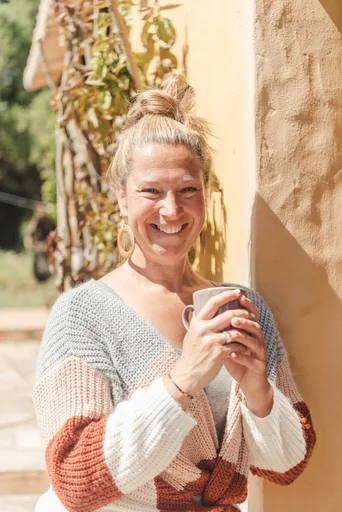12 Ways to Make Sitting in Meditation Easier - Yoga Journal

Introduction to Meditation and Its Challenges
Meditation is a powerful practice that offers numerous benefits for the mind, body, and spirit. However, many individuals find it challenging to sit in meditation for an extended period. Understanding the importance of comfort in meditation is crucial for making this practice more accessible and enjoyable.
Common Challenges in Finding the Right Sitting Position
One of the most common challenges in meditation is finding the right sitting position. The discomfort caused by an improper posture can hinder the overall experience and deter individuals from continuing their practice. Whether it's physical discomfort or mental restlessness, these challenges can make it difficult to fully engage in meditation.
1. Finding Your Perfect Spot
When it comes to meditation, finding the perfect spot can significantly impact your practice. The environment in which you meditate plays a crucial role in creating a conducive atmosphere for inner peace and focus.
The Importance of a Quiet and Peaceful Environment
Creating a quiet and peaceful environment is essential for meditation. A serene space allows you to sit undisturbed, fostering a sense of tranquility that enhances the overall experience. Whether it's a designated meditation room or a cozy corner in your home, the key is to find a place where you can retreat from external distractions.
Tips for Creating a Meditation Space at Home
Choose a location with minimal foot traffic and noise.
Use soft lighting or natural light to create an inviting ambiance.
Consider incorporating elements of nature, such as plants or natural materials, to promote a sense of calm.
Personalize the space with meaningful objects or decor that inspire feelings of serenity.
Considering the Time of Day for Meditation
The time of day at which you choose to meditate can also influence your experience. Some individuals find that sitting in the morning sets a positive tone for the day ahead, while others prefer evening sessions to unwind and reflect on their day.
Morning vs. Evening: What Works Best for You?
Meditating in the morning:
Sets an uplifting tone for the day.
Provides clarity and focus before starting daily activities.
Cultivates a sense of mindfulness that carries through the day.
Meditating in the evening:
Helps release tension accumulated throughout the day.
Encourages relaxation and prepares the mind for restful sleep.
Offers an opportunity for reflection and introspection after daily events.
2. The Right Posture

Finding the right posture is essential for a comfortable and effective meditation practice. Sitting with proper alignment not only supports the spine but also allows for deeper, more relaxed breathing, enhancing the overall experience.
The Basics of a Good Sitting Posture
When it comes to meditation, good posture starts with aligning your spine. This means sitting upright with your back straight, but not rigid. Imagine a string pulling you up from the top of your head, elongating your spine and creating space between each vertebra. This alignment not only promotes better breathing but also helps prevent discomfort or strain during longer meditation sessions.
Aligning Your Spine for Better Breathing
Proper spinal alignment facilitates unrestricted airflow in and out of the lungs, promoting a sense of ease and relaxation. As you meditate, focus on maintaining this alignment to support a natural flow of breath, allowing you to remain present and centered throughout your practice.
Adjusting Your Legs and Hands
In addition to spinal alignment, finding the right position for your legs and hands is crucial for sustained comfort during meditation. There are various sitting positions to consider, each offering unique benefits tailored to individual preferences.
Different Sitting Positions: Cross-legged, Chair Sitting, and More
Cross-legged: This classic meditation posture involves sitting on the floor with crossed legs. It provides a stable base and encourages an open hip position conducive to deep breathing.
Chair Sitting: For those who may find floor sitting uncomfortable or challenging due to physical limitations, using a chair can be an excellent alternative. Choose a chair with a firm seat that allows your feet to rest flat on the ground while supporting an upright spine.
Cushion Support: Utilizing cushions or bolsters can enhance comfort in both cross-legged and chair sitting positions by providing additional support for the hips and lower back.
By exploring these different options, you can find a posture that suits your body's needs while promoting relaxation and focus during meditation.
3. Incorporating Yoga for Better Sitting
Incorporating yoga into your meditation routine can significantly enhance the ease and comfort of your sitting practice. By engaging in gentle yoga poses and breathing exercises before meditation, you can prepare your body and mind for a more relaxed and focused experience.
Gentle Yoga Poses Before Meditation
Before settling into your meditation posture, consider incorporating gentle yoga poses to release tension and promote flexibility, particularly in areas that may feel tight from prolonged sitting or daily activities. These preparatory movements can help create a sense of ease in the body, making it easier to maintain a comfortable seated position during meditation.
Some beneficial yoga poses include:
Seated Forward Fold: This pose stretches the lower back, hamstrings, and hips, releasing any tightness accumulated from prolonged sitting.
Cat-Cow Stretch: Flowing through cat-cow movements helps to warm up the spine, promoting flexibility and mobility in preparation for a seated posture.
Shoulder Rolls: Rolling the shoulders gently in both directions loosens tension in the upper back and shoulders, allowing for greater relaxation during meditation.
By integrating these gentle yoga poses into your pre-meditation routine, you can cultivate a greater sense of physical ease and readiness for sustained sitting.
Breathing Exercises to Relax the Body
In addition to yoga postures, incorporating specific breathing exercises from the yogic tradition can further relax the body and calm the mind before entering into meditation. The practice of controlled breathing, known as Pranayama, offers numerous benefits for enhancing mental focus and overall well-being.
One effective Pranayama technique is Nadi Shodhana, or alternate nostril breathing. This exercise involves inhaling and exhaling through one nostril at a time, promoting balance between the right and left hemispheres of the brain while calming the nervous system. By regulating your breath in this manner before meditation, you can establish a sense of inner harmony that supports a more centered state of being.
Another beneficial technique is Sitali Pranayama, also known as cooling breath. This practice involves inhaling air through a rolled tongue or pursed lips, creating a cooling sensation that soothes both body and mind. Sitali Pranayama is particularly helpful for reducing stress and preparing for deeper states of relaxation during meditation.
Research has shown that these breathing exercises not only induce relaxation but also have profound effects on neural activity within the brain. A study published in Frontiers in Neuroscience found that experienced yoga practitioners exhibited unique neural responses during breath work tasks, highlighting the neurological benefits of incorporating such practices into one's meditative routine (Neural Correlates of Yoga Components).
By integrating gentle yoga poses and specific Pranayama techniques before meditation, you can create an optimal foundation for an easier and more fulfilling sitting experience.
4. Tools and Props for Support

Incorporating the right tools and props can significantly enhance your meditation experience, providing essential support for a comfortable sitting practice.
Choosing the Right Meditation Cushion
Meditation cushions play a crucial role in creating a supportive foundation for your seated meditation practice. The Padma Silk & Wool Asana Meditation Mat is designed to elevate your meditation experience by providing a comfortable surface for seated meditation. Crafted with the same design and materials as the popular Meditation Chair Blankets, this mat offers a blend of softness and support, making it an ideal companion for your wellness journey.
Another excellent option is the Block Print Meditation Cushion - Double Sided Round. This beautifully crafted cushion features a double-sided design adorned with intricate handcrafted block prints. Whether you prefer soothing tranquility or vibrant energy, this cushion allows you to switch between sides to match your mood and meditation style, offering both softness and support for maintaining posture and focus during your practice.
Types of Cushions and Their Benefits
Padma Silk & Wool Asana Meditation Mat: Provides a comfortable surface for seated meditation, blending softness with support.
Block Print Meditation Cushion - Double Sided Round: Features a double-sided design with intricate handcrafted block prints, offering both softness and support for maintaining posture and focus during meditation.
Using Blankets and Blocks for Added Comfort
In addition to cushions, incorporating blankets and blocks can further enhance comfort during meditation. The Zabuton Meditation Floor Cushions from Gaiam add an extra layer of softness to your practice, relieving pressure from your back, knees, and ankles. These cushions are designed to complement various styles of Zafu Meditation Cushions, providing body-contouring cotton batting and internal cushion top for enhanced comfort during extended periods of sitting.
Moreover, utilizing blankets can offer additional warmth and comfort during cooler temperatures or in drafty spaces. A cozy blanket draped over the legs or shoulders can create a sense of coziness that promotes relaxation while maintaining a comfortable seated position.
How to Use Props to Enhance Your Sitting Position
When using props such as cushions, blankets, or blocks, it's essential to position them strategically to optimize their benefits. Placing the Zabuton Meditation Floor Cushion beneath your Zafu Meditation Cushion provides added support while relieving pressure from sensitive areas such as the knees and ankles. Additionally, using blankets to create layers of padding beneath the hips can help maintain proper alignment while promoting physical ease throughout your meditation session.
By integrating these tools and props into your meditation practice, you can create an environment that fosters comfort, stability, and focused awareness.
Conclusion: Making Meditation a Joyful Practice
Embracing Patience and Consistency
Meditation is not a quick fix, but rather a journey of self-discovery and inner transformation. It requires patience and consistency to reap its full benefits. Just as physical exercise yields results over time, the practice of meditation cultivates mental resilience and emotional well-being through regular, dedicated effort. Embracing patience means understanding that progress may be gradual, but each moment of stillness contributes to your overall growth.
Consistency is key in making meditation an integral part of your daily routine. By setting aside dedicated time for practice each day, you reinforce the habit of turning inward and nurturing your mental landscape. Whether it's a few minutes in the morning or before bedtime, establishing a consistent schedule fosters a sense of discipline and commitment to your well-being.
Celebrating Small Wins in Your Meditation Journey
In the pursuit of mastering meditation, it's essential to acknowledge and celebrate small victories along the way. Each instance of finding peace amidst the chaos, quieting the mind during moments of stress, or experiencing deeper relaxation than before is a triumph worth recognizing. These small wins serve as affirmations of your progress and dedication to personal growth through meditation.
Reflect on how far you've come since beginning your meditation practice. Recognize the subtle shifts in your mental state, emotional resilience, and overall well-being that have emerged as a result of consistent effort. By celebrating these incremental achievements, you reinforce the positive impact of meditation on your life and inspire continued motivation to delve deeper into this transformative practice.
See Also
Optimal Yin Yoga Poses for Improved Sleep
Satya Yoga: Postures, Chants, Gestures, and Reflection
We bring back the importance of initiation into womanhood by Roos-Veerle Krijnen & Ella-June Henrard
Welcome to the Women’s Initiation Retreat by Naked Truth Retreats, a transformative journey into the depths of your True Feminine Nature. This retreat, scheduled from 17th to 24th August 2024 in Portugal, invites you to remember the sacredness and wholeness of your being.
Roos-Veerle Krijnen & Ella-June Henrard



